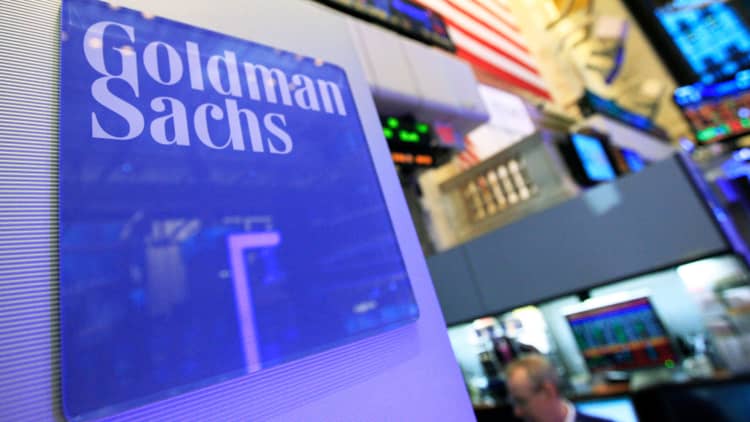
Goldman Sachs is reorganizing its businesses to more closely resemble Wall Street peers and give its nascent retail banking operations its own category.
The bank is now calling its four main segments global markets, investment banking, asset management and consumer & wealth management, Goldman said in a filing early Tuesday. Previously, the divisions were called institutional client services, investment banking, investment management, and investing and lending.
The changes, just before the bank's fourth-quarter earnings report next week as well as its first-ever investor day later this month, should allow investors a cleaner look at how Goldman lines up with competitors. It could also showcase growth in Goldman's digital retail banking and credit-card operations, home to its Marcus brand and the Apple Card, which had previously been buried in another division.
It's the latest step taken by CEO David Solomon to put his stamp on the company as it attempts to transition from a somewhat secretive Wall Street trading house to a bank with more diversified revenue streams.
Solomon has complained that investors haven't yet appreciated the progress being made in his new digital businesses. The company created Marcus in 2016, offering high interest savings and personal loans to mainstream consumers for the first time, and last year unveiled its first credit card with tech giant Apple.
The bank is dissolving its investing and lending division, a business that held public and private investment stakes that could result in earnings volatility in any given quarter -- both to the upside and downside -- and that some analysts had deemed a black box. For instance, in October, Goldman reported third-quarter profit that missed expectations, partly because it was stung by plunging holdings in Uber and Tradeweb held in the investing and lending segment.
Instead, the activities that used to make up investing and lending will now be reported across the four new segments, placing corporate lending into the investment banking division and retail lending into the new consumer division, for example.
CFO Stephen Scherr hinted at these changes in October during a conference call with analysts.
"We've been taking commentary and perspective from investors and from you in the context of where there's been some frustration," Scherr said. "I hear it loud and clear in the context of frustration with I&L, as an example, and so we're going to guide ourselves in the direction of segments to meet some of what all of you have been asking for."
Still, the changes highlight how much further Goldman has to go to diversify away from Wall Street businesses of trading and investment banking. The bank disclosed the last four quarters of results under the new reporting lines, and revenue from those two divisions dwarfed asset management and consumer & wealth management.
In the new consumer division, a high level of operating expenses resulted in relatively tiny profits in recent quarters as the company ramped up investments. The unit generated $124 million in pre-tax earnings in the third quarter, about 1/10th of what the global markets business produced.


